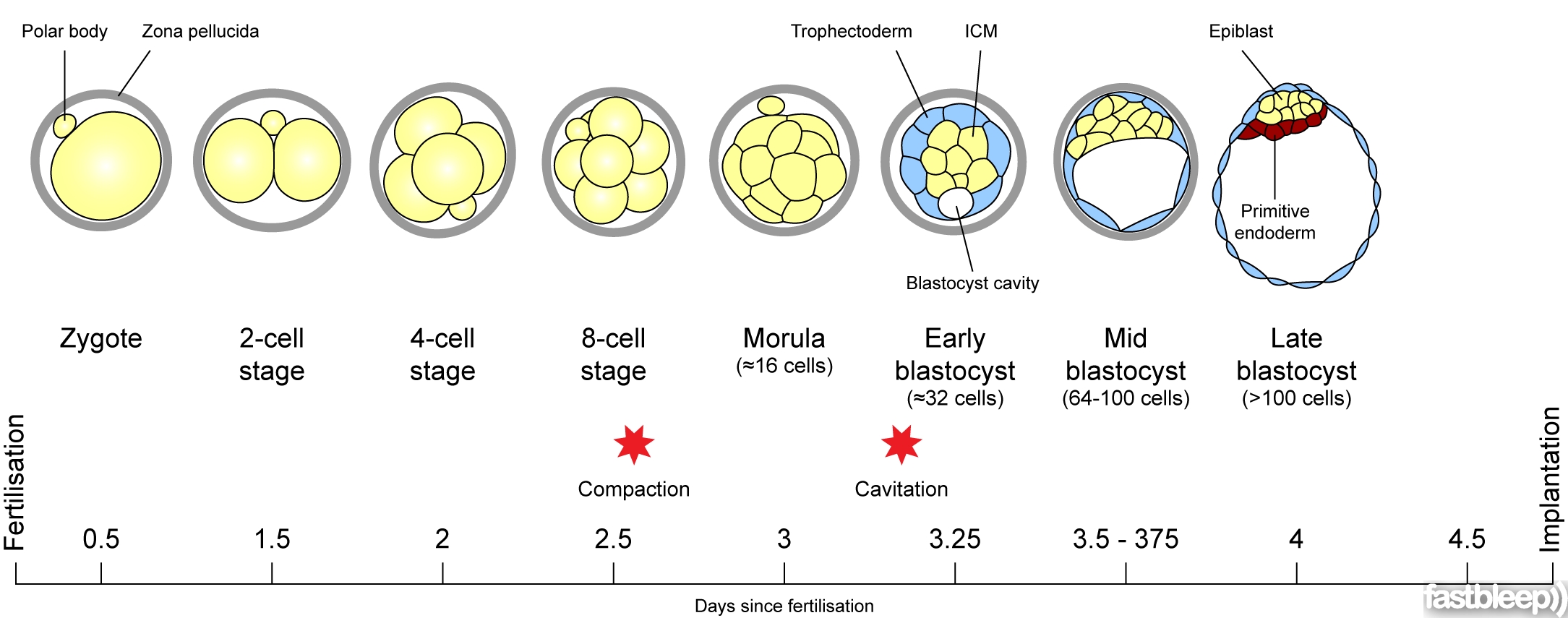
Según el artículo de T Truong publicado en Human Reproduction el 10/11/2017
Antioxidants improve IVF outcome and subsequent embryo development in the mouse
What is the effect of a combination of three antioxidants (Acetyl-L-Carnitine, N-Acetyl-L-Cysteine and α-Lipoic Acid), present in IVF medium during mouse oocyte and sperm collection, on fertilization and subsequent IVF embryo development?
A combination of antioxidants resulted in faster developmental times from the 2-cell stage through to expanded blastocyst stage, accompanied by a significant increase in blastocyst cell number and a reduction of intracellular hydrogen peroxide (H2O2) levels.
The antioxidant combination Acetyl-L-Carnitine, N-Acetyl-L-Cysteine and α-Lipoic Acid, when present in embryo culture media, has a significant beneficial effect on in vitro fertilized mouse pronucleate oocyte development, especially under oxidative stress.
IVF was conducted with combined antioxidants supplemented in IVF medium that was used for mouse oocyte collection and fertilization (oocyte IVF medium, 4 h exposure) and sperm collection and preparation (sperm IVF medium, 1 h exposure).
IVF was conducted under 20% oxygen, in the presence or absence of a combination of antioxidants (10 μM Acetyl-L-Carnitine, 10 μM N-Acetyl-L-Cysteine, 5 μM α-Lipoic Acid) and resultant embryos cultured with and without antioxidants under 20% oxygen. Subsequently, the effects of antioxidants on either oocytes or sperm was evaluated. Embryo development was analysed through time-lapse microscopy followed by differential nuclear staining to determine cell allocation in the blastocyst. Intracellular levels of H2O2 were assessed using an aryl boronate probe after 4 h of incubation with antioxidants. Controls were gametes and embryos that had no antioxidants in the medium. In a separate series of experiments, pronucleate oocytes were collected in handling medium with and without antioxidants for 20 min and subsequent cell numbers analysed.
Antioxidant treatment during both IVF and culture resulted in significantly faster development times to two cell cleavage (P < 0.01), which continued through to the expanded blastocyst stage (P < 0.05). Resultant blastocysts had a significant increase in both trophectoderm (TE) cell numbers, inner cell mass (ICM) and total cell numbers (P < 0.001). The addition of antioxidants to IVF medium or embryo culture media exclusively also resulted in a significant increase in both blastocyst TE and ICM numbers leading to an increase in total cell numbers (P < 0.001). Antioxidant supplementation of either oocyte IVF medium alone, or in both oocyte and sperm IVF medium, lead to significantly faster times to two cell cleavage, which continued through to the expanded blastocyst stage. Blastocyst cell number in both these groups had significantly higher TE cell numbers resulting in an increase in total cell numbers. In contrast, there were no differences in embryo developmental rates and blastocyst cell number when antioxidants were present only in the sperm IVF medium. Levels of H2O2 were significantly reduced in pronucleate oocytes that were cultured in the presence of antioxidants (P < 0.001) compared to control, untreated embryos. Similarly, pronucleate oocytes treated with the combined antioxidants during pronucleate oocyte collection resulted in significantly increased blastocyst ICM numbers compared with controls (P < 0.05).
Embryo development was only examined in the mouse.
These findings suggest that supplementation of antioxidants to the IVF medium, as well as to embryo culture media, may further assist in maintaining the viability of human embryos in ART, conceivably through the reduction of oxidative stress.
This work was funded by a research grant from Vitrolife AB (Sweden). The authors have no conflict of interest to declare.